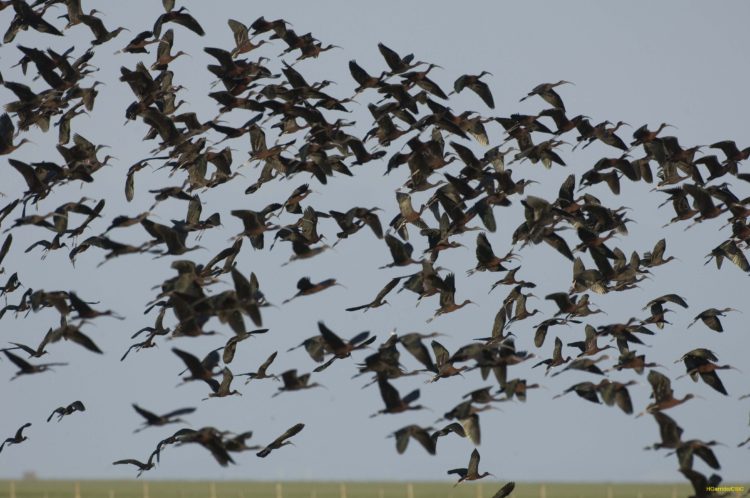The Kushlan Research Award winner of this year is a proposal promoted by one of our members, Simone Santoro (Universidad Pablo de Olavide, Spain), and Alejandro Centeno-Cuadros (Biotech Business International, Spain). The aim is investigating the glossy ibis (Plegadis falcinellus) gene flow at a worldwide scale by combining nuclear and microsatellite markers.
The project has been made possible by the recently-established Glossy ibis Research Network whose members will meet for the first time at Doñana National Park (Spain) between 27-29th November 2017 under the auspices of the IUCN SSC SIS-SG, organized and promoted by Simone Santoro, Jocelyn Champagnon (IUCN SIS SG member, Tour du Valat, France) and Jordi Figuerola (Estación Biológica de Doñana, CSIC, Spain).
The glossy ibis is a nomadic species whose northern and southern populations have been hypothesized to be fully migratory. Ringing programs from the Soviet Union and Hungary in the past century have shown that at least some European breeders may be trans-Saharan migrants, and those breeding in the Caspian zone may disperse both SW towards Africa and SE towards India. Recently, ringed individuals of a newly-established growing glossy ibis colony at Doñana were observed in Barbados, Trinidad and Tobago, Gambia, Ukraine and northern Scotland.
Furthermore, preliminary genetic analyses showed that Cuban and Spanish specimens share at least one haplotype supporting the hypothesis that New World populations were founded from the Old World.
Very little is known about long distance dispersal, if any, of glossy ibis populations of N America, Asia, S Africa and Australia. However, an increasing number of documented changes in the distribution range have been reported in the last decades in the Mediterranean Basin, W and E Europe, in S Africa and in N America. Moreover, there is no information about long-distance dispersers, their contribution to gene flow patterns and whether sex-biased dispersal might explain these patterns. Glossy ibis is susceptible to avian influenza and other pathogens and it can contribute to spread them over long distances.
Summarizing, while a few evidences of long distance dispersal across continents are known, there is a severe lack of information about the world-scale population connectivity and a limited knowledge of the dynamics of most glossy ibis metapopulations.
In short, this study aims to investigate the glossy ibis population structure and connectivity across the entire distribution range by combining nuclear and microsatellite markers with advanced Approximate Bayesian Computation analyses. The researchers expect that outcomes of this study will be of interest for our understanding of population dynamics and the design of adequate design of conservation plans and will provide valuable information for future epidemiological studies.
Featured image: Glossy ibises flying at Doñana marshland, Spain. © Héctor Garrido, 2008.

